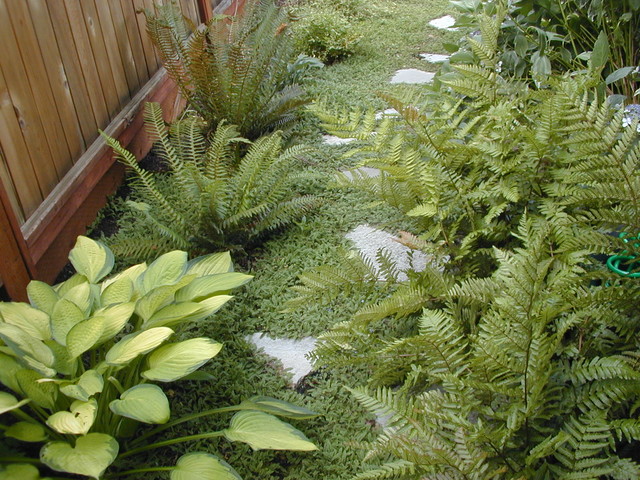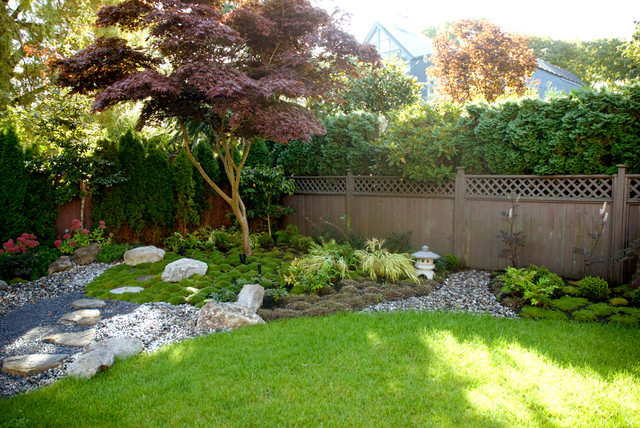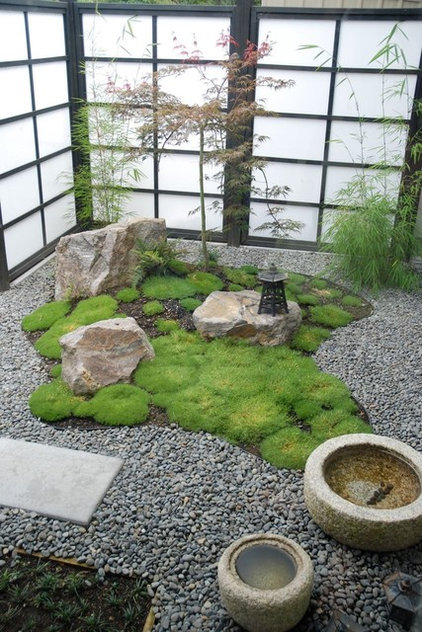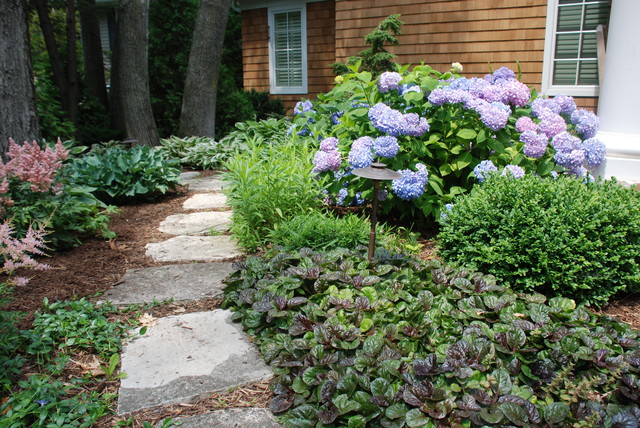6 Great Ways With Garden Ground Covers
Some ground cover plants can be vigorous growers in certain growing conditions (borderline invasive, actually), so make sure to do your research and take the necessary precautions. This can mean segregating areas of ground cover and lawn, since voracious ground cover plants can migrate into the grass and take over. That said, once you select the right ground cover and define a suitable site, the opportunities to create a truly striking landscape abound.
Here are some of my favorite ways to use ground covers in the garden.
|
Between pavers. This is
probably the most common usage of ground covers, and rightly so, as it
is extremely effective. Whether it is an informal approach with
irregular stone slabs or a modern high-contrast aesthetic with modular
pavers, ground covers fill in the spaces between stonework and create a
surface that is visually appealing and functional.
When selecting a ground cover for your paving project, make sure to choose a specimen that can handle foot traffic. One of my favorites is brass buttons (Leptinella squalida, USDA zones 4 to 10). As can be seen in this instance, Leptinella is a vigorous grower and forms a dense carpet of tiny fern-like foliage that is evergreen in temperate climates. More: Plants for Your Pathway |
|
by Aloe Designs
»
|
|
Around trees. Many trees
have a unique form to their trunk and branches — a feature that should
be emphasized. Instead of planting shrubs and perennials around the base
of a feature tree, try incorporating a carpet of ground cover that will
allow the root form to be appreciated. Mosses like Irish moss (Sagina subulata, zones 4 to 8) also form interesting mounds that bloom with tiny flowers in midsummer.
|
Knawel cushion (Scleranthus biflorus, zones 9 to 11) is a truly fascinating specimen that will likely become a feature in your rock garden. This slow growing, mound-forming plant provides a dense carpet of green foliage that will slowly creep over the surrounding rocks. Make sure that the soil is well drained, as knawel cushion is prone to rotting with too much water.
|
In acidic soil. Planting
around the base of large conifers is often challenging because of the
acidic, depleted soil and low-light conditions. Most ground covers will
not do very well in this situation, but there are often significant
spaces between shrubs and perennials that will benefit from ground
cover.
One plant that is up to the challenge is bugle weed (Ajuga reptens, zones 3 to 10), a rapidly spreading evergreen ground cover that creates a tight mat of foliage with flower spires in the early spring. It is worth noting that Ajuga can be somewhat invasive and should be sited only in locations where it can be contained. |
|
by Matt Kilburn
»
|
|
Around walls and hardscape features. Some
ground covers are well suited to areas of a site where the grade change
is defined by walls and other hardscape features. It can be challenging
to integrate these features into the landscape, because their hard
lines contrast the aesthetic of the surrounding softscape features.
Baby’s tears (Soleirolia soleirolii, zones 9 to 11) is a versatile ground cover that's well suited to this situation, since it flourishes with very little soil present and grows over hardscape features with little or no assistance. Brick walls take on a completely different appearance when they are blanketed in baby’s tears, and it is possible to create the impression that they have been there for centuries. |
|
by Matt Kilburn
»
|
|
As standalone features. Every
once in a while, you come across a really creative use of ground covers
that makes for an interesting conversation piece in the garden. Last
year I toured England, visiting some of the most influential gardens in
the country and soaking up the design inspiration.
While exploring the various garden rooms at Sissinghurst Castle, I came across an intriguing feature tucked into the hedge lining the herb garden. A stone bench had been adorned with a carpet of chamomile, forming a chamomile (Chamaemelum nobile spp) seat. This type of feature was common in medieval gardens, and it can provide inspiration for fragrant ground covers in your own yard. Try Roman chamomile or English chamomile for the best results (they are both low-growing varieties), or experiment with other types of low-growing ground cover, like creeping thyme (Thymus serpyllum, zones 4 to 8). |





